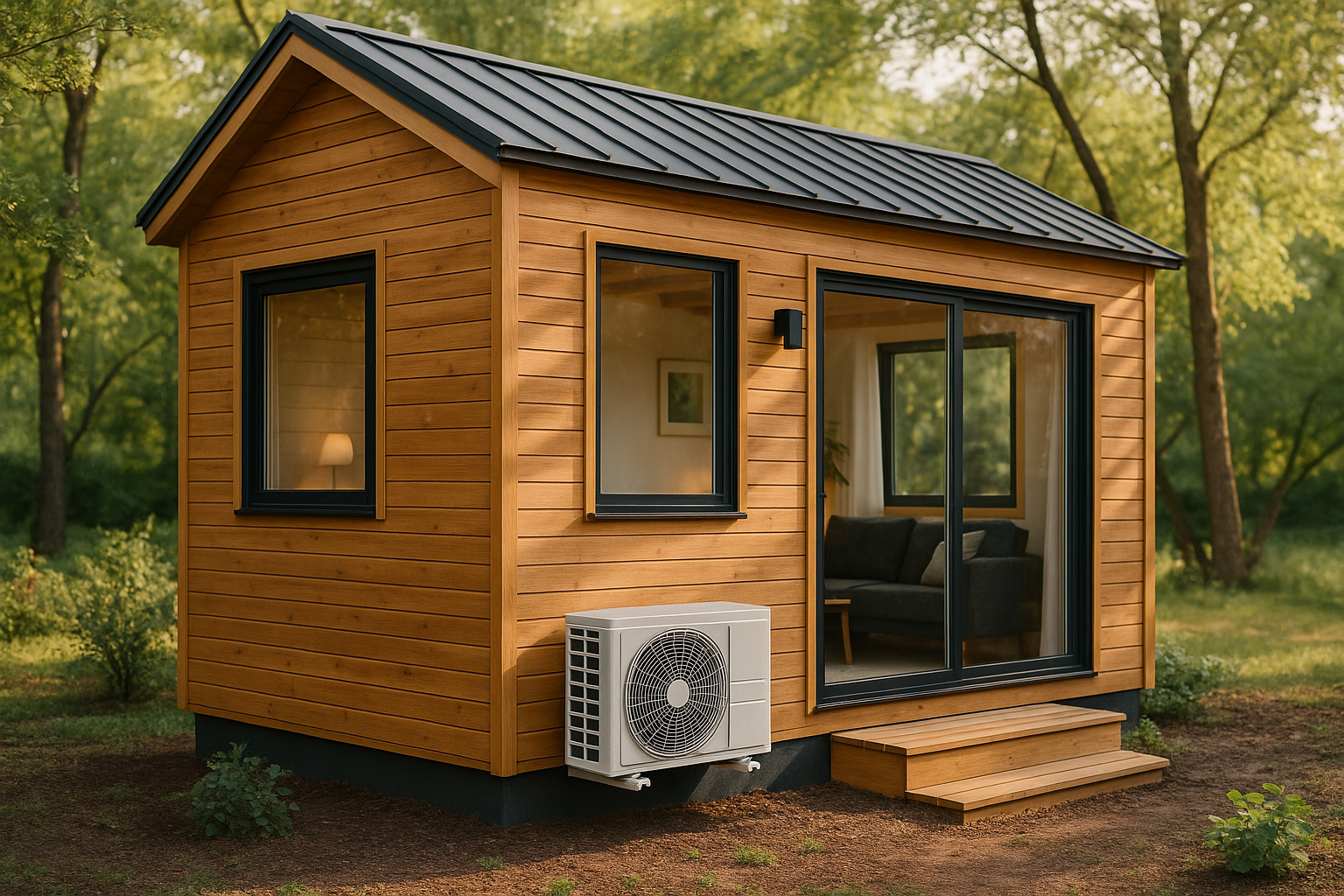A Complete Guide to Sizing Your TURBRO Multi-Zone Split AC System (2025 Update)
Choosing the right cooling system is essential for creating a comfortable and energy-efficient indoor environment. TURBRO multi-zone mini split AC systems offer a flexible solution that allows you to independently control the temperature in multiple rooms. Whether you’re upgrading your home or planning for a new space, understanding how to properly size your system is the first step to achieving consistent comfort.
This updated 2025 guide will walk you through how to evaluate your space, calculate your cooling needs, and choose the correct configuration of TURBRO indoor and outdoor units.
Understanding Multi-Zone Mini Split Systems
TURBRO multi-zone systems feature one outdoor condenser connected to multiple indoor air handlers. Each indoor unit can be controlled separately, providing customized temperature control for each room or zone. Unlike traditional central air systems that deliver uniform cooling to an entire structure, multi-zone setups give you greater flexibility and energy savings by cooling only the spaces you use most often.
In addition to improved energy efficiency, these systems are ideal for homes or offices with varied usage patterns. Bedrooms, living rooms, and workspaces often require different temperatures throughout the day. With a multi-zone system, you can maintain the right comfort level in each area without overcooling or wasting energy.
Factors to Consider When Sizing Your System
Several key factors influence the size and configuration of your multi-zone system. First and foremost is the total square footage of the space you intend to cool. Generally, you’ll need about 20 BTUs per square foot. For example, a 1,200-square-foot space typically requires around 24,000 BTUs.
However, square footage alone isn’t enough. The layout of your home or office can impact how efficiently cool air circulates. Open-concept layouts often need fewer units, while spaces with more walls or enclosed rooms will benefit from multiple indoor air handlers to distribute cooling evenly.
You should also consider how often each room is used and whether any specific areas generate more heat. Rooms with high ceilings, large windows, or heat-producing appliances may need more cooling power. Poor insulation or older windows can lead to higher heat gain, so you may need to increase your system capacity to compensate. Finally, the climate in your region plays a role. Hotter, more humid areas require greater cooling capacity compared to milder zones.
How to Calculate BTU Requirements
BTUs (British Thermal Units) indicate the cooling power of an AC system. To estimate the BTUs needed for your space, use the following formula:
HVAC BTU ≈ Room Area × Floor Height ÷ 8 × Sunlight Multiplier
To estimate the cooling capacity you need, multiply the square footage of each room by the height of the room, divide that number by 8, and finally, multiply that answer by a “sunlight multiplier” of 20 for shades rooms, 25 for partially sunny rooms, and 30 for rooms that receive full sunlight.
For example, let’s say you have a living room that is 20 feet long and 15 feet wide, for a total square footage of 300 sq ft. This room also has a 9-foot ceiling, so you will multiply 300 by 9 to give you a value of 2,700. Dividing 2700 by 8 gives you a value of 337.5.
Since this room faces the South and receives full sunlight through a large window all day, you will multiply 337.5 times a sunlight multiplier of 30 to give you a final BTU estimate of 10,125 BTUs to cool your space. This would allow you to use a 9K BTU unit at about 112.5% capacity, or you can size up to a 12K BTU unit running at about 84% capacity to make sure that your room will stay cool. Either unit would be sufficient for this size of space.
Once you’ve totaled your BTU requirements, match them to an appropriate TURBRO compressor. Each compressor supports a range of BTU loads, typically between 80 to 135 percent of the listed capacity. This flexibility allows you to customize your system while leaving room for slight variations in performance needs.
Choosing the Right TURBRO Unit
After determining your total BTU needs, you can begin selecting your indoor unit combinations. TURBRO offers indoor air handlers in several sizes, including 9,000, 12,000, 18,000, and 24,000 BTUs. You can mix and match these based on the size and function of each room.
For smaller homes or apartments under 1,000 square feet, a dual-zone system with two 9,000 BTU units or a 9K and 12K combination may be ideal. For mid-sized homes between 1,000 and 2,000 square feet, consider a 27,000 BTU compressor paired with either a dual- or tri-zone configuration, such as one 12K and one 18K unit or three 9K units. For larger spaces up to 3,000 square feet, a 36,000 BTU compressor with tri- or quad-zone combinations is typically appropriate.
2025 TURBRO System Sizing Table
|
Total Square Footage |
BTUs Needed |
BTU Model |
Zone Options |
TURBRO Indoor Unit Combinations |
|
Up to 1,000 sq ft |
Up to 20,000 BTUs |
18,000 BTU |
Dual Zone |
9K + 9K 9K + 12K |
|
1,000–2,000 sq ft |
20,000–30,000 BTUs |
27,000 BTU |
Dual Zone |
9K + 18K 12K + 12K 12K + 18K 12K + 24K 18K + 18K |
|
Tri-Zone |
9K + 9K + 9K 9K + 9K + 12K |
|||
|
2,000–3,000 sq ft |
30,000–40,000 BTUs |
36,000 BTU |
Dual Zone |
12K + 24K 18K + 18K |
|
Tri-Zone or |
9K + 9K + 18K 9K + 12K + 12K 9K + 9K + 24K 9K + 12K + 18K 12K +12K + 12K |
|||
|
Quad-Zone |
9K + 9K + 9K + 9K 9K + 9K + 9K + 12K 9K + 9K + 12K + 12K |
|||
|
2,000–3,000 sq ft |
40,000+ BTUs |
42,000 BU |
Dual-Zone |
18K + 24K |
|
Tri-Zone |
9K + 9K + 24K 12K + 12K + 18K |
|||
|
Quad Zone |
9K + 9K + 12K + 12K |
|||
|
Penta Zone |
9K + 9K + 9K + 9K + 9K |
Installation and Maintenance Considerations
To ensure your system performs at its best, pay attention to placement and installation. Indoor units should be installed in areas with clear airflow and minimal obstructions. Avoid placing them behind furniture, curtains, or other items that could block circulation.
Routine maintenance is essential to maximize efficiency and extend the lifespan of your system. Clean the filters regularly, check for refrigerant leaks, and make sure the outdoor unit remains free from dirt and debris. A well-maintained system will not only cool more effectively but also consume less energy over time.
Advanced Features of TURBRO Systems
TURBRO’s latest multi-zone systems offer several smart features to enhance usability and efficiency. Many models include Wi-Fi connectivity, allowing you to control your system remotely through a smartphone app. Systems are also compatible with popular voice assistants, making it easier to adjust temperatures with simple commands.
Additional energy-saving features like programmable timers and eco modes help reduce utility costs. In humid climates, the built-in dehumidification mode can also improve comfort and indoor air quality. Quiet operation ensures that units won’t disrupt work or sleep, especially in bedrooms or home offices.
Final Thoughts
Selecting the right TURBRO multi-zone mini split AC system involves evaluating your space’s square footage, layout, cooling requirements, and the appropriate compressor capacity. By considering these factors and utilizing the above table, you can customize a cooling solution that ensures maximum comfort and energy efficiency for your home or office. With the right system, you can enjoy a cool, comfortable environment tailored to your specific needs, while also benefiting from reduced energy costs and advanced features designed to enhance your indoor climate control.





